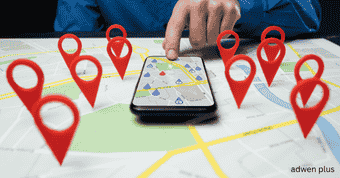When someone types “near me” on Google—like coffee shop near me or plumber near me—they’re ready to act. They want nearby results, fast. If your business isn’t showing up, you’re missing real customers. Here’s how you can fix that.
Why “Near Me” Searches Matter
- 46% of all Google searches are looking for local info
- Searches like “near me” have grown over 500% in the last few years
- These users are often ready to call, visit, or buy now
If you run a local shop, clinic, salon, or service, showing up in these results can bring in steady foot traffic and phone calls.
1. Claim and Complete Your Google Business Profile
This one is the first step. It’s free, and it makes a big difference.
Tips:
- Add accurate name, address, phone number (NAP)
- Choose the right categories (like “Coffee Shop” or “Yoga Studio”)
- Upload good-quality photos
- Add business hours, website link, and description
- Use real customer reviews and respond politely
Why it works: Google trusts verified, updated listings. The more details you add, the better your chances of showing up.
2. Keep NAP Consistent Across the Web
Your Name, Address, and Phone number (NAP) must be the same everywhere—on your website, directories, and social media.
Even small differences (like “Rd” vs “Road”) can confuse Google and hurt rankings.
3. Add Location Pages to Your Website
If you serve multiple neighborhoods or cities, create separate pages for each with useful details.
For example:
If you run a physiotherapy clinic in Mumbai and Pune, make pages like:
- /mumbai-physiotherapy-clinic
- /pune-physiotherapy-clinic
Include nearby landmarks, services offered, and local testimonials.
4. Use Local Keywords Naturally
Don’t stuff your content. Just speak like your customers.
Examples of natural keywords:
- “affordable salon near Andheri West”
- “home tiffin delivery near Connaught Place”
- “best child dentist near Indiranagar”
Use them in:
- Page titles
- Headers (H1, H2)
- Meta tags
- Image alt text
- Reviews and testimonials
5. Get More Local Reviews
Reviews help in two ways: they build trust and boost rankings.
Ask customers to leave reviews on:
- Justdial
- Sulekha
- Practo (for doctors/clinics)
- Zomato or Swiggy (for food businesses)
6. Add Schema Markup for Local Business
A schema is a type of code that tells Google more about your business.
Use LocalBusiness schema to include:
- Business name
- Location
- Opening hours
- Reviews
- Menu (if you’re a restaurant)
You can ask your web developer to set this up, or use tools like Rank Math or Yoast (for WordPress users).
7. Get Local Backlinks
Get links from local directories, blogs, or news sites.
Where to list your business:
- IndiaMart
- Justdial
- Sulekha
- Local business groups on Facebook
- Area-based WhatsApp groups or forums
Backlinks from these help Google understand that your business is active and real.
8. Focus on Mobile Speed and Usability
Most “near me” searches come from mobile. Make sure your site:
- Loads fast (under 3 seconds)
- Is easy to scroll and tap
- Has clear call-to-action (Call Now, Get Directions, Book Online)
FAQs
Q1. What does “near me” mean in a Google search?
It means Google is looking for results close to your physical location, often based on GPS or IP address.
Q2. How long does it take to show up in local results?
If your Google Business Profile is complete, you may see improvements in 1–4 weeks, but consistency matters.
Q3. Can I rank for “near me” searches without a physical shop?
It’s harder. You can list yourself as a service-area business, but a physical location helps a lot.
Q4. Do reviews really affect “near me” rankings?
Yes. Google values quality and frequency of reviews—especially recent ones.
Q5. How often should I update my listing?
Any time your hours, phone number, or offerings change. Even small updates show activity to Google.
Showing up for “near me” searches isn’t about tricks—it’s about clarity, trust, and consistency. Keep your info up-to-date, speak like your customer, and offer real value.
Want help ranking locally?
Reach out to me—Swapan Kumar, SEO consultant at Adwen Plus—with 18+ years of experience in helping businesses get found when it matters most.







